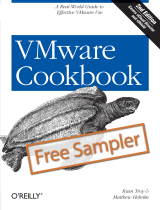
Validation Impact Severity Refer to Section
Duplex setting should be consistent across all
paths to the PowerStore cluster per single
host or a cluster of hosts.
Performance Warning Recommended Zoning
Configuration
If jumbo frames are required for iSCSI traffic,
all ports (server, switches and storage) must
be configured with the same MTU value.
Performance Warning Recommended Configuration for
iSCSI
Enable the TCP Offloading Engine (TOE) on
the host iSCSI interfaces.
Performance Warning Recommended Configuration for
iSCSI
Balance the hosts across the target ports of
the appliances to provide a distributed load
across all target ports.
Performance Recommended Recommended Zoning
Configuration
Use dedicated NICs or iSCSI HBAs for
PowerStore cluster iSCSI connection.
NOTE: Avoid partitioning the iSCSI
interface.
Performance Recommended Recommended Configuration for
iSCSI
In PowerStore only single network subnet is
supported for the iSCSI target portals.
Performance Normal Recommended Configuration for
iSCSI
Minimal Subnetting Configuration for iSCSI
To prevent host path failure due to a single node failure, make sure to maintain redundancy.
• A PowerStore Appliance contains two nodes.
• A host must be connected at minimum with one path to each node for redundancy.
Recommended Configuration for iSCSI
Consider the following recommendations when setting up an iSCSI SAN infrastructure.
• External hosts can be attached via ISCSI to a PowerStore cluster via either the embedded 4-port card or via a SLIC:
○ Hosts connected via the first two ports of the 4-port card, will be connected using ToR switches (also used for PowerStore
internal communication). With this configuration, it is recommended to use a dedicated VLAN, and if not possible, use a separate
subnet/network for iSCSI storage.
○ For hosts connected using any other iSCSI port (that is, not the first two ports), use either dedicated iSCSI switches or a
dedicated VLAN for iSCSI storage.
• The PowerStore cluster can be shipped with various extension modules for iSCSI. If your PowerStore cluster contains more than one
extension I/O module per node, distribute the connections among all I/O modules for highest availability and performance.
• You can connect the host to 1-4 appliances. It is recommended to connect the host to as many appliances as possible to allow volume
migration to and from all appliances.
• iSCSI switch recommendations
○ Use nonblocking switches
○ Use enterprise grade switch
○ Utilize at minimum 10GbE interfaces
• It is recommended to use dedicated NICs or iSCSI HBAs for PowerStore cluster iSCSI and not to partition the iSCSI interface (that is,
disable NIC Partitioning - NPAR).
• Enable the TCP Offloading Engine (TOE) on the host iSCSI interfaces, to offload the TCP packet encapsulation from the host's CPU
to the NIC or iSCSI HBA, and free up CPU cycles.
• When using PowerStore iSCSI, it is recommended to use interfaces individually rather than using NIC Teaming (Link Aggregation), to
combine multiple interfaces into a single virtual interface.
• In PowerStore only single network subnet is supported for the iSCSI target portals and routing is not supported.
• If Jumbo Frames are required for iSCSI traffic, make sure that all ports (servers, switches and system) are configured with the same
MTU value.
NOTE: VMware requires setting Jumbo Frames at the virtual switch and VMKERNEL level.
12 Best Practices for Storage Connectivity





















